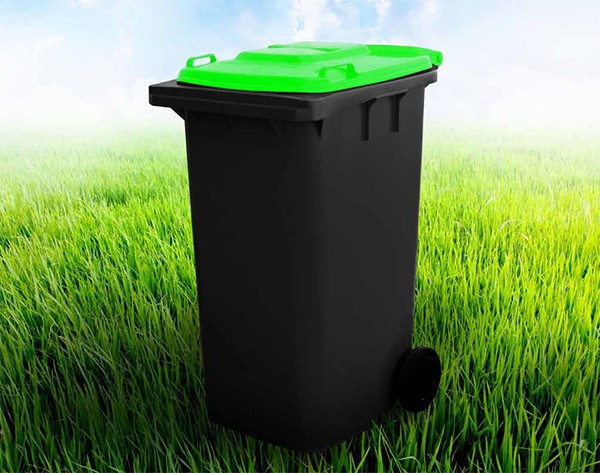Who Will Pay Syria’s Disposal Fee?
By the end of 2014, all of Syria’s chemical weapons and production facilities must be destroyed. Over the next several weeks through the end of March, the most dangerous and toxic elements of Syria’s arsenal will be disposed of. No chemical components should remain by mid-summer and by the end of the year all production and delivery systems will be gone. Ten governments are directly involved in the operations to eliminate Syria’s chemical weapons and dozens more are financing the OPCW and the commercial destruction of components. It’s impossible to determine total costs to date, but the scale is quite impressive.
“One of the lessons of the Cold War is that when things fall apart in a country with weapons of mass destruction, some outside assistance is necessary to secure materials, technology, and people,” said Sharon Squassoni, Director and Senior Fellow for the Proliferation Prevention Program at the Center for Strategic & International Studies, in a conversation with WEJ. She described the active participation of a wide coalition of countries involved in the destruction of Syria’s chemical weapons.
Back in August 2013, the world’s most eminent analysts weighed the option of U.S. and NATO military intervention in Syrian affairs under the pretext of Assad using chemical weapons against rebels and civilians. But as a result of a diplomatic compromise and the direct participation of the Russian Foreign Ministry, the parties managed to agree on a plan at the end of last August to destroy all chemical weapons and production facilities inside Syria.
The first difficulty in destroying Syrian chemical weapons was the continuing military action inside Syria as well as the 45 locations associated with the production of chemical weapons being geographically dispersed. In December 2013 alone, for example, radical groups twice attempted unsuccessfully to seize chemical weapons, attacking warehouses where they were stored.
Security issues in Syria have necessitated an extension of the final deadline for removing 20 tons of the most hazardous and priority substance (of 1,300 total tons) – mustard gas – from December 31, 2013 to March 15, 2014. The ultimate goal of destroying all of Syria’s chemical weapons by the end of 2014 remains unchanged.
“Although the tight deadlines for taking chemicals and weapons out of the country have not been met, the progress is still impressive,” said Squassoni. In fact, the necessity to destroy the chemical weapons as quickly as possible has led a number of states to quickly provide the equipment, staff, and private participation necessary for the operation.
The main participants of course are Russia and the U.S., which have taken on the most difficult tasks of transporting and directly destroying the chemical weapons. Russia has provided transportation for moving the cargo to the Port of Latakia, where Danish and Norwegian ships take them to Italy. From southern Italy, the Syrian chemical weapons with the greatest toxicity are sent into neutral waters where, they are destroyed on the USS MV Cape Ray. Less toxic cargo will be destroyed by private companies that have the necessary capacity.
The expenses incurred by direct participants in the operation can’t be determined, as the U.S., Russia, and other countries are using their armed forces and data about operations is classified.
We can, however, estimate the expenses of the Organisation for the Prohibition of Chemical Weapons (OPCW), which organized a Syrian trust fund that had reached €9.8 million by the end of last December. In early 2014, the EU had earmarked another €12 for the OPCW. As Bessma Momani, Senior Fellow at the Centre for International Governance Innovation, said, “OPCW is a UN agency that is financed by all members that are capable of paying. This means most of the financial burden falls on advanced economies.” At the moment, the main donors to the OPCW Syrian fund are: the Czech Republic, Germany, Ireland, Italy, Luxembourg, Malta, New Zealand, Norway, Poland, South Korea, Turkey, and the UK.
Squassoni said that “the OPCW has estimated that dismantling Syria’s chemical arsenal could range from $45 million to $60 million, but this does not include costs for transportation, which is a critical element of the plan. Other observers have suggested the total costs could be much higher, between $100 million and $150 million.” Either way, the total amount is far from Bashar Assad’s claim that it would cost $1 billion.
Virtually the entire burden for eliminating Syria’s chemical arsenal is being borne by taxpayers in developed countries as well as the direct mediators in the conflict. The beneficiaries will be private European companies that are prepared to dispose of chemical weapons. The process for choosing these companies will be an open tender from OPCW for tens of millions of dollars. As of now, 35 companies have expressed interest in the tender.
In any event, all participating countries, the OPCW, and other participating organizations are interested in the speedy destruction of the entire Syrian chemical arsenal and are willing to pay whatever it takes to prevent any of the components from falling into the hands of radicals.

Text: Anton Barbashin




Comments are closed.